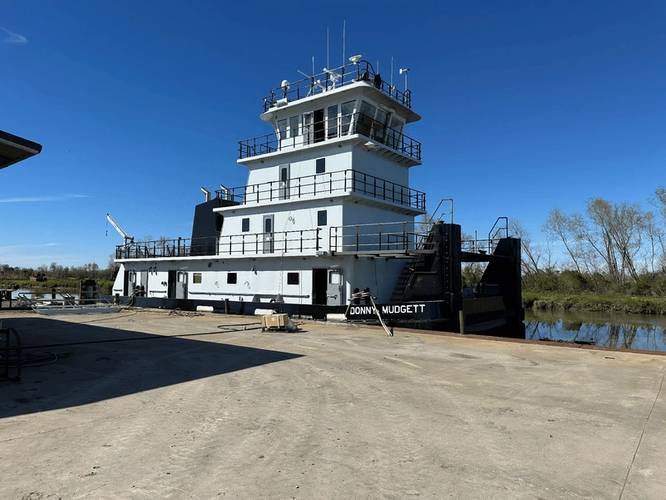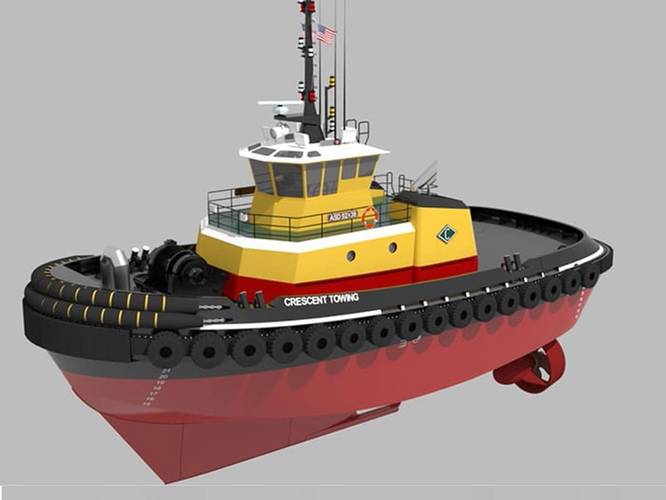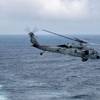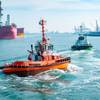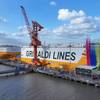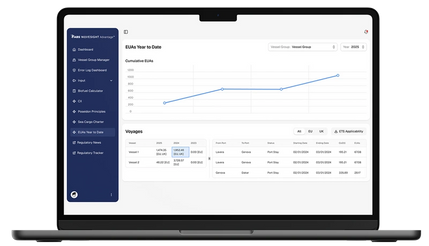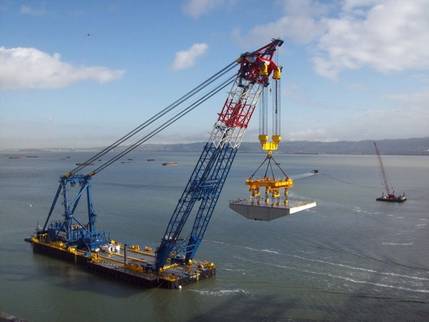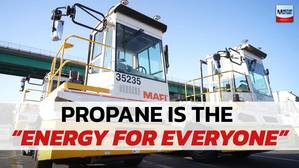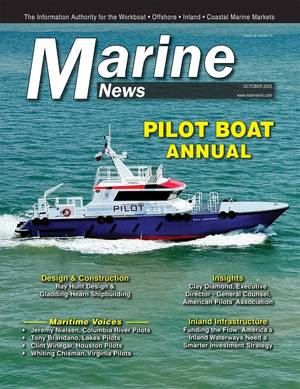U.S. Boatbuilding Gains Steam
Shipbuilding in the United States has seen a heightened profile with increased attention from Congress and the Trump 2.0 Administration. The ongoing dialogue regarding reinvigorating the U.S. deep sea fleet has brought mainstream attention to vessel construction, which has been nearly absent in recent years. In contrast, the marketplace for domestic vessel construction, for vessels serving rivers and harbors, is alive and well. Recent newbuilds for linehaul trades, and also Z-drive vessels for ship assist work, show the resilience of this sector.
April 2025 saw the christening of the towboat DAVID NORTH, the 10th in a series being built for barging stalwart Ingram Marine, from Main Iron Works (Houma, Louisiana). The boat, working in the Lower Mississippi, is powered by twin Cat C32 Tier 3 engines, providing a total of 1,600 horsepower. The first tug in the series had been delivered four years earlier. Sister vessels are all engaged in Ingram’s Mississippi River and Houston, Texas trades. Around the same time, at its facility in Paducah, Kentucky, Ingram was christening another tug, the M/V LEN O’CONNOR (the ninth newbuild in the Main Iron Works series) and the re-christening M/V JERRY W LONG (7,200 horsepower, built in the late 1960s for Midland Enterprises, which Ingram had acquired in the early 2000’s). Main Iron Works had recently completed a series of 6,000 horsepower tractor tugs for Bisso Towing, active in escort assist work on the Lower Mississippi.
Later in the Spring of 2025, tug and barge owner Maritime Partners (which, in turn, provides lease or bareboat charters to vessel operators) took delivery of the tug JOAN PLUCK, from FMT Shipyard (Harvey, Louisiana). The twin Mitsubishi S6R2 engines (Tier 3), providing 1,600 hp, sourced through distributor Laborde Products, are also deployed on other vessels in Maritime Partners’ current newbuild program, including PARKER BROOKS (delivered in February, providing ship assist in waters around Houston), and the soon-to-be-completed ISABEL PLUCK (working around Mobile, Ala).
In early June, another Louisiana based owner, LeBeouf Brothers, christened MARK DELESDERNIER JR., a 3,600-horsepower boat built at the Steiner yard in Bayou La Batre, Ala. Nearby yard Blakely BoatWorks (in Mobile, Ala), part of the Cooper Group (which got a start in logistics and stevedoring), is building the third in a series of 6,000-horsepower, Tier 4 Z- drive boats sister company Crescent Towing. Designed by Crowley Engineering, the vessel that will be used for ship assist on the Lower Mississippi.
Another south Louisiana yard, Intracoastal Iron Works, is building a series of boats for Nashville, Tennessee-based Hines Furlong, active on both the Mississippi River and its tributaries. The first vessel, M/V DONNY MUDGETT (powered with a triple screw configuration of Mitsubishi Tier 3 S6R2 engines, providing 2,400 horsepower overall) was delivered in late May. The overall construction program, which will include newbuilds from Eymard Marine Construction & Repair (in Harvey, La) will see delivery of four more triple-screw vessels and six twin-screw vessels.
Bay Houston Towing has also recently christened two Robert Allan designed Z Tech boats, GEORGE M (6,700 hp, built 2021 at Gulf Island Fabrication) and MAY LOUISE (7,000 hp, built 2024 at Master Boat Builders ). Both are fitted with twin Caterpillar 3516 (Tier 4) propulsion, with selective catalytic reduction (SCR) installed. The company has two additional ship escort tugs (with a Robert Allan 3200-W design, 8800 horsepower) on order, from the Sterling Shipyard (Port Neches, Texas) for delivery later in 2025.
In Port Arthur, Moran Towing has added newbuild, MARY JANE MORAN, also with a Crowley design, to its fleet of escort vessels. Built at Master Boat Builders in Alabama, the boat features two Caterpillar 3512E engines (5,100 horsepower combined) tied to US 205 Z-drives from Kongsberg.
Building of boats has evolved greatly in recent years; Moran explained to Marine News that: “One example is our program to deploy Internet of Things (IoT) technology to increase the efficiency of our day-to-day tugboat operations." IoT uses include smart sensors and real-time connections to online platforms that enable shoreside monitoring and improved optimization of tug operations.
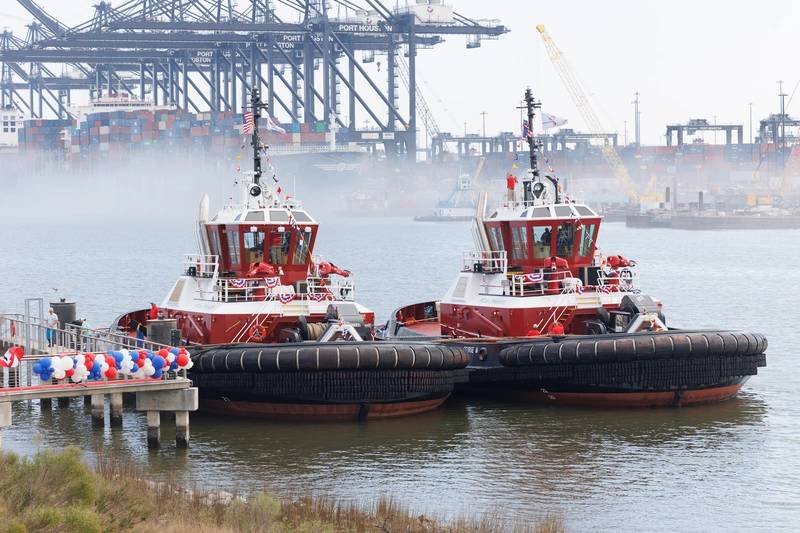 Image source Bay Houston
Image source Bay Houston
Shaver Transportation, operating primarily in the Pacific Northwest, launched its newest tug, HEATHER S, a Robert Allan Rapport 2500 design, at Gunderson Marine & Iron, in Portland, Oregon with Diversified Marine, also in Portland, completing the follow-up work. The main engines on the boat, to be used mainly for ship assist work around Portland and on the Columbia River, are Tier 4 Caterpillar 3516E, with 7,000 total horsepower. The bigger yards have, by necessity, diversified beyond traditional building of tugs and barges for commercial work. Eastern Shipbuilding Group (ESG), with yards in the Florida Panhandle, has a quartet of 7,000 horsepower escort tugs under construction for Saltchuk Marine, with Tier 4 Caterpillar engines, each vessel outfitted with a pair of Schottel SRP 510 azimuth thrusters in a Robert Allan RApport 2600 design. Importantly, these boats, set to operate by subsidiary company Foss in West Coast ports following anticipated 2026 deliveries, will meet the environmental standards set by the California Air Resources Board (CARB). Dredge construction is also in ESG’s wheelhouse; a hopper dredge for the U.S. Army Corps of Engineers (USACE) is currently under construction, with an expected delivery in 2027, and the yard recently signed a deal with industry leader Dutra for a newbuild trailing suction hopper dredge for 2028 delivery.
Bollinger, with more than a dozen facilities around the U.S. Gulf, has diversified as well. In a recent panel appearance at Marine Money Week, 2025, in New York, Ben Bordelon, the yard’s President and CEO, said “We build for the government, and we also do a lot of commercial work. We’ve seen peaks and valleys over the past 40 to 50 years that have devastated the shipbuilding industry,” he said. He also referred to challenges in the workflows, saying “In between the valleys, we are substituting workers on different programs.” In his remarks, Bordelon stressed the importance of the Jones Act, saying: “Frankly, without it, we’d be gone.”
Nevertheless, the outlook for vessel builders can be described as cautious; Conrad Shipyard, a listed company (OTCMKTS: “CNRD”), had told investors in a Spring 2025 filing, “In the first quarter of 2025, we have encountered new steel tariffs, rising steel prices, an unclear inflation outlook and shifting U.S. trade policy and foreign policy….” adding that “These factors contribute to a more uncertain outlook for the remainder of the year.
Conrad, with yards in Louisiana and Texas, a longtime player in commercial construction and repair, has received an $8.4 million contract from the US Army Corps of Engineers for construction of a deck barge to be used at a facility near Memphis, Tennessee, after delivery. It has also recently scored a contract worth $29 million with the U.S. Navy, to build an accommodation barge at its Amelia, La. yard, to be deployed at a U.S. Navy base in Japan following its 2027 delivery. This follows up on a previous barge delivery to the Navy in 2024.
The Jones Act panel at Marine Money, where Bordelon participated, was one of several following up on keynote remarks by Senator Mark Kelly (D- Arizona), one of the bipartisan sponsors of the SHIPS for America Act was a big topic at Marine Money. Senator Kelly, one of the bill’s sponsors, provided Day 1 keynote remarks. Many commentators have questioned whether a desired resurgence of deep sea shipbuilding in U.S. yard,- the focus of the legislation (a “heavy lift”, in the words of multiple speakers), might benefit yards building vessels working the rivers and harbors. James Lightbourn, CEO of capital arranger Cavalier Ship Finance, and a keen observer of the maritime capital markets, told Marine News: “Simply put, the SHIPS for America Act is not written for the domestic boatbuilding sector. The construction cost premium for building tugs, barges, and workboats domestically is generally in the 2-3x range, while the ratio is closer to 5x for building larger ocean-going vessels domestically. While there could be some indirect benefit to the domestic boatbuilding sector through grants earmarked for smaller shipyards, those sums pale in comparison to what has been budgeted to support the construction and operation of internationally trading vessels.”
The workboat side of the business, has been moving in a good direction with its multi-vessel orders- such as those from Ingram, Maritime Partners, Hines Furlong and Moran. Bollinger’s Ben Bordelon, after lamenting the difficulties that the yards are facing, told the Marine Money audience, “We’ve got to have some long-term stability and discipline…” In discussing possible long-term build programs coming from the government (as the SHIPS Act is developed), he said, “We need some visibility in that. We don’t need onesies and twosies (referring to single vessel orders); that is a high risk type of project that’s going to be expensive.”
On the same Marine Money panel, Sam Norton, CEO of Overseas Shipholding Group (OSG, the tanker and articulated tug / tank barge operator, now part of the Saltchuk Group) emphasized the need for stability in cash flows when supporting long term finance, and lamented recent “trader mentality” tendencies of oil companies, which favor short-term chartering strategies. In his remarks, he also expressed a concern that language in the SHIPS Act needs to be geared more towards series production of identical vessels (rather than single orders). Talking about Washington, D.C.’s yearly authorizations process, he asked “How do you put longer term programs in place … without having to run into this political nightmare every year?”
Bordelon emphasized the stability and declining costs that come from series production. “Shipyards have had successes with repetitive long-term contracts. If you want to bring the industrial base back to America, sign long term contracts.” He emphasized the “learning curve”, where costs come down (and quality is enhanced as kinks are worked through), and talked about “…having a commonality in engineered solutions”.






